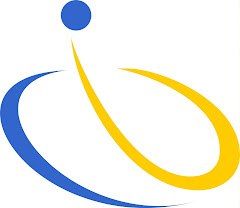Any time you are dealing with human beings, particularly groups of them, pretty much anything can happen. The keys to dealing with the people at your event are preparation, flexibility and empowering staff to address problems.
Managing the people at your event starts with pre-event communications – with invitations, marketing materials and your Web site. In all of these things, you want to anticipate questions and answer the ones that are most likely to arise.
Here are some things you may want to include that are sometimes forgotten:
• What is the expected dress?
• What type of food is being served? A full dinner? Heavy hors d'oeuvres?
• Contact information for someone who can answer questions.
• The day of the week the event will be held (not just the date).
You’ll want to go a step further for any VIP with an official role at the event – master of ceremonies, speakers, award recipients. They need more than the basic information, and they need to get it more than once. Make sure they get a clear description of what will be expected of them – what they need to do and when they need to do it – in the context of the overall program.
If there are key things to remember then these things should be highlighted, and possibly mentioned more than once in each communication. For example, if there is a strict time limit for a speaker (and there almost always should be), then this should be mentioned two or three times in every instructional communication sent prior to the event and then at the event.
A good rule of thumb is provide written instructions to VIPs with a role in the event three times before the event, and then the written instructions should be handed to them as they walk into the event.
No matter how much information you provide people before the event, someone – many someones! – will pretty much always miss some of the details. A big part of handling that is making sure that event staff is properly trained to deal with problems as they arise. Training, training, training! Even when the instructions are simple, they should be provided to staff in written form and should be explained in a training session.
During the event, there are several key areas to keep in mind, related to people management – areas where problems are likely to arise and where you had darned-well better be prepared.
Sign-in Table
If you are doing a large event, this is an area that presents much peril.
• Have at least two people working the sign-in table. Three people can do up to 300 attendees.
• If you plan to have nametags, the most efficient way to handle them is to print them before hand and arrange them in alphabetical order. Be sure to have plenty of blank name tags for people who show up and aren’t on the list (either because they did not register or because of an error on your end – like the time my laptop randomly kicked out 40 or so names and just “chose” not to print name tags for them).
• Either have sign-in sheets or a checklist with everyone’s name (or both).
• It sometimes helps to have little, folded, cardstock signs that vegetarian guests can place at their seats to notify servers that they will be given a vegetarian meal (or gluten-free or whatever).
• Someone with no formal duties at the sign-in table should be assigned as a trouble-shooter, to deal with any problems as they arise. Then, any time a sign-in staff person encounters a problem, it can immediately be directed to the trouble shooter without stopping up the registration line. If the event is smaller (generally 75 or less) then you can be the troubleshooter. If it gets larger than 75, it would be best to get someone else because there will be other things that go wrong to which you will have to attend.
During the Program
If you have a good Master of Ceremonies, that will take care of a great deal. He or she should be able to keep things moving a long, occasionally injecting humor or sober reflection or whatever emotion contributes to the mood of the evening.
Here are some tips to help program speakers stick to their time limits:
• Before hand, remind them about the time limit at least three times, in writing, then again, in writing, as they walk in the door.
• Put a sign on the lectern that reminds speakers of their time limit.
• Place a small digital clock on the lectern so that speakers can clearly monitor how much time remains.
• Let someone be an informal time keeper; place them in the speaker’s line of sight and let the speaker know that this person will stand when 15 seconds remain on the speaker’s time limit.
In the Food Line (if it is a buffet)
• Provide one food table, allowing serving lines on both sides, for every 100 to 200 people.
• If it is self-serve, assign at least two staff people to each table. They will both ferry food back and forth from the kitchen and help guests who have questions or problems.




No comments:
Post a Comment